
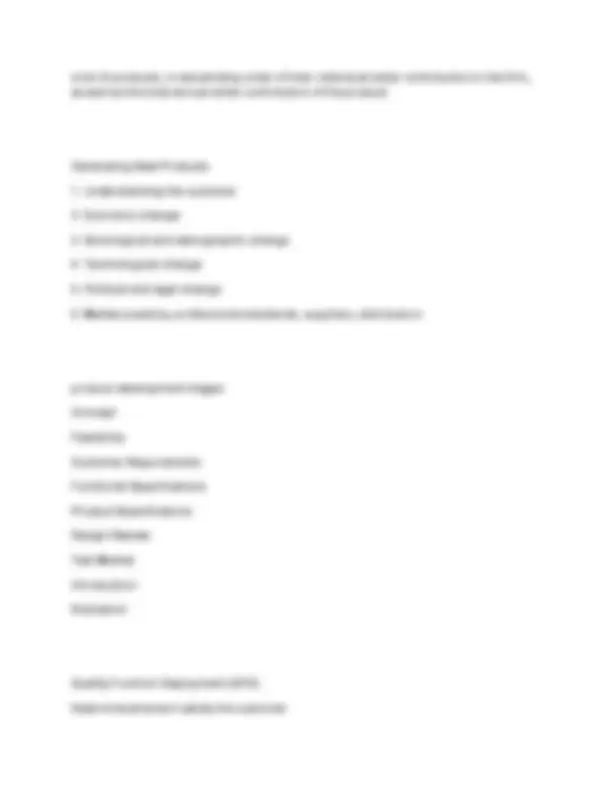
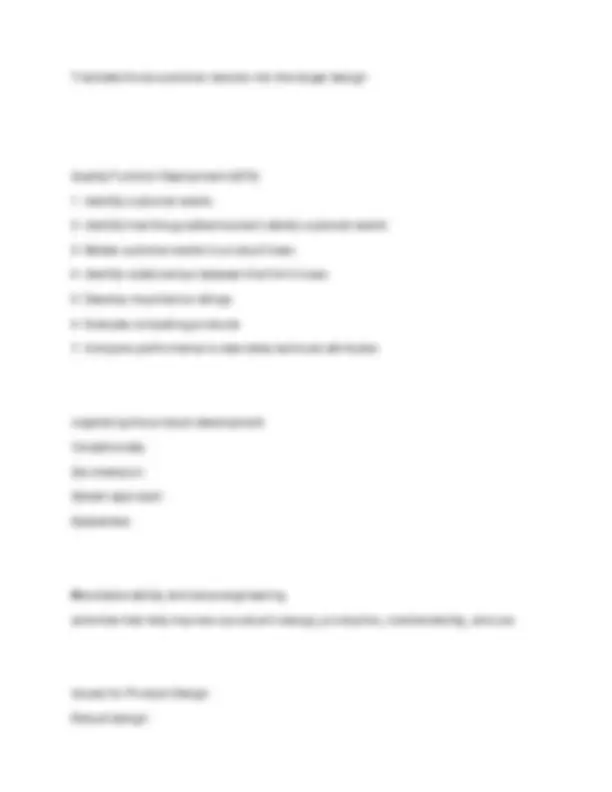
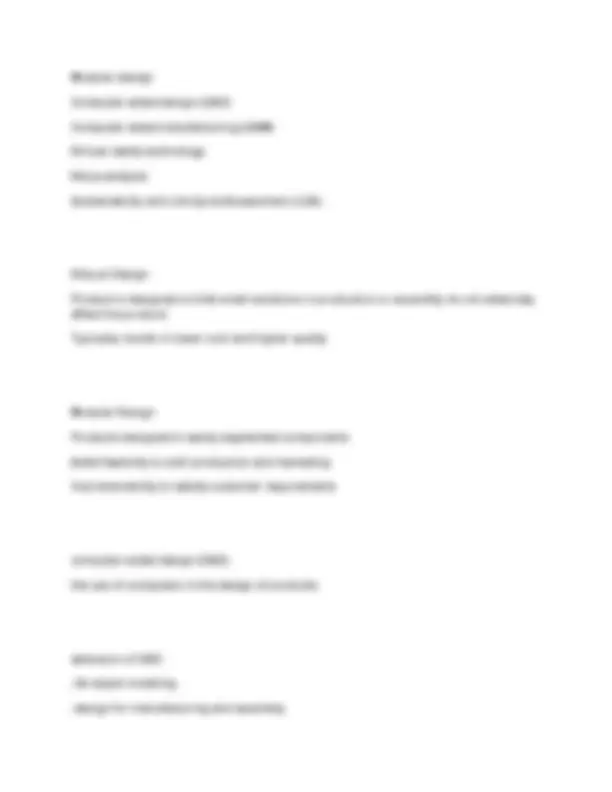


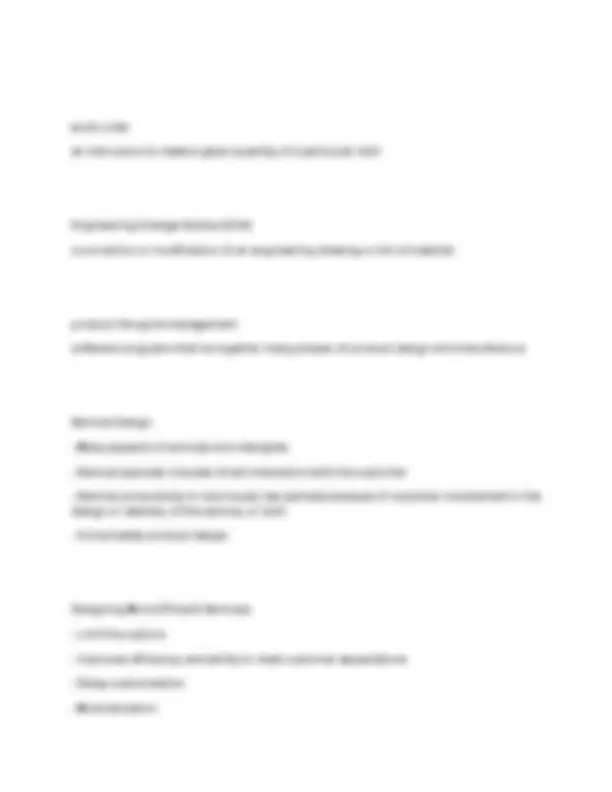
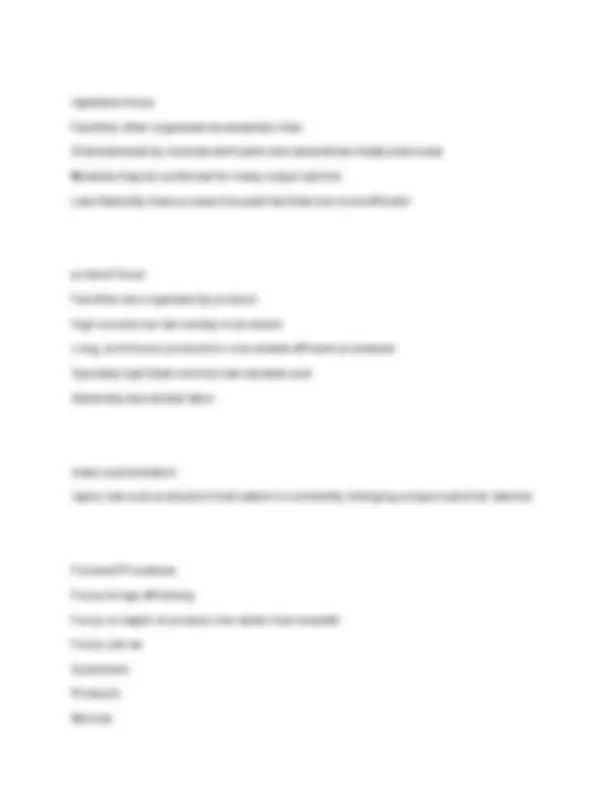
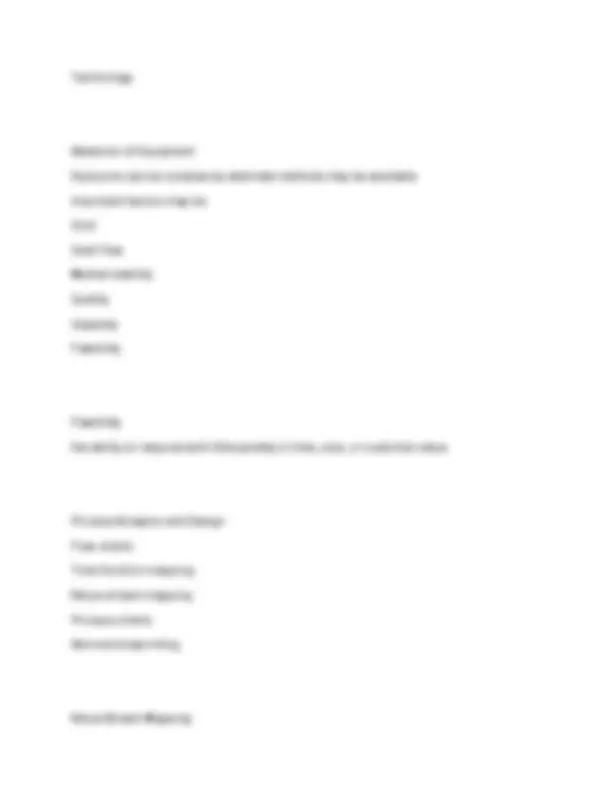
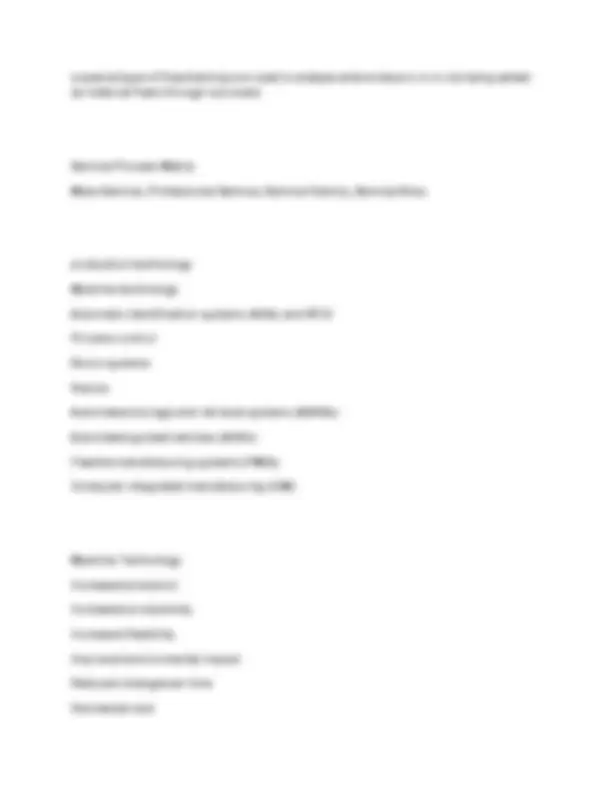


Study with the several resources on Docsity

Earn points by helping other students or get them with a premium plan


Prepare for your exams
Study with the several resources on Docsity

Earn points to download
Earn points by helping other students or get them with a premium plan
Community
Ask the community for help and clear up your study doubts
Discover the best universities in your country according to Docsity users
Free resources
Download our free guides on studying techniques, anxiety management strategies, and thesis advice from Docsity tutors
SCM 186 LU EXAM QUESTIONS AND ACCURATE ANSWERS (A+)
Typology: Exams
1 / 17

This page cannot be seen from the preview
Don't miss anything!










Service Blueprinting focuses on the provider's interaction with the customer
How companies compete Product Innovation, Operational Excellence, Customer Intimacy
Product Strategy Options
Product Life Cycle (PLC) the course of a product's sales and profits over its lifetime
PLC: Introduction Stage High failure rates, high advertising and production costs, negative profits Fine tuning may warrant unusual expenses for 1- research 2-product development 3-process modification and enhancement 4-supplier development
PLC: Growth Stage Increasing rate of sales Entrance of competitors Market consolidation Initial healthy profits Aggressive advertising of the differences between brands Wider distribution product design begins to stabilize
PLC: Maturity Stage Sales increase at a decreasing rate Saturated markets Annual models appear Lengthened product lines Service and repair assume important roles Heavy promotions to consumers and dealers Marginal competitors drop out Niche marketers emerge
PLC: Decline Stage Long-run drop in sales Large inventories of unsold items Elimination of all nonessential marketing expenses "Organized abandonment"
Product-by-value analysis
Translate those customer desires into the target design
Quality Function Deployment (QFD)
organizing the product development 1)traditionally 2)a champion 3)team approach 4)japanese
Manufacturability and value engineering activities that help improve a product's design, production, maintainability, and use
Issues for Product Design Robust design
Modular design Computer-aided design (CAD) Computer-aided manufacturing (CAM) Virtual reality technology Value analysis Sustainability and Life Cycle Assessment (LCA)
Robust Design Product is designed so that small variations in production or assembly do not adversely affect the product Typically results in lower cost and higher quality
Modular Design Products designed in easily segmented components Adds flexibility to both production and marketing Improved ability to satisfy customer requirements
computer-aided design (CAD) the use of computers in the design of products
extension of CAD -3d object modeling -design for manufacturing and assembly
product development continuum- internal strategies
product development continuum Product life cycles are becoming shorter and the rate of technological change is increasing Developing new products faster can result in a competitive advantage Time-based competition
Purchasing technology by acquiring a firm -Speeds development -Issues concern the fit between the acquired organization and product and the host
joint venture an agreement between two or more companies to share a business project
Alliances cooperative agreements that allow firms to remain independent, but pursue strategies consistent with their individual missions
defining a product First definition is in terms of functions Rigorous specifications are developed during the design phase Manufactured products will have an engineering drawing Bill of material (BOM) lists the components of a product
Product Documents -Engineering drawing -Shows dimensions, tolerances, and materials -Shows codes for Group Technology -Bill of Material -Lists components, quantities and where used -Shows product structure
make or buy decision a decision concerning whether an item should be produced internally or purchased from an outside supplier
group technology the grouping into part families of items with similar design or manufacturing characteristics
work order an instruction to make a given quantity of a particular item
Engineering Change Notice (ECN) a correction or modification of an engineering drawing or bill of material
product life-cycle management software programs that tie together many phases of product design and manufacture
Service Design
Designing More Efficient Services
Transition to Production -Know when to move to production -Product development can be viewed as evolutionary and never complete -Product must move from design to production in a timely manner -Most products have a trial production period to insure producibility -Develop tooling, quality control, training -Ensures successful production -Responsibility must also transition as the product moves through its life cycle -Line management takes over from design -Three common approaches to managing transition -Project managers -Product development teams -Integrate product development and manufacturing organizations
Activities of a process
repetitive focus Facilities often organized as assembly lines Characterized by modules with parts and assemblies made previously Modules may be combined for many output options Less flexibility than process-focused facilities but more efficient
product focus Facilities are organized by product High volume but low variety of products Long, continuous production runs enable efficient processes Typically high fixed cost but low variable cost Generally less skilled labor
mass customization rapid, low-cost production that caters to constantly changing unique customer desires
Focused Processes Focus brings efficiency Focus on depth of product line rather than breadth Focus can be Customers Products Service
Technology
Selection of Equipment Decisions can be complex as alternate methods may be available Important factors may be Cost Cash flow Market stability Quality Capacity Flexibility
Flexibility the ability to respond with little penalty in time, cost, or customer value
Process Analysis and Design Flow charts Time-function mapping Value-stream mapping Process charts Service blueprinting
Value Stream Mapping
Reduced power requirements
Automatic Identification System (AIS) and RFID Improved data acquisition Reduced data entry errors Increased speed Increased scope of process automation
Process Control real time monitoring and control of processes
Vision Systems Particular aid to inspection Consistently accurate Never bored Modest cost Superior to individuals performing the same tasks
Automated Storage and Retrieval System (ASRS) An automated warehouse; items placed in a storage system and retrieved by fast-moving stacker cranes; controlled by computer
Automated Guided Vehicle (AGV) electronically guided and controlled cart used to move materials
Flexible Manufacturing System (FMS) computer-controlled equipment can easily be adapted to produce a variety of goods
computer-integrated manufacturing (CIM) -> Extend flexible manufacturing
Process Redesign the fundamental rethinking of business processes to bring about dramatic improvements in performance